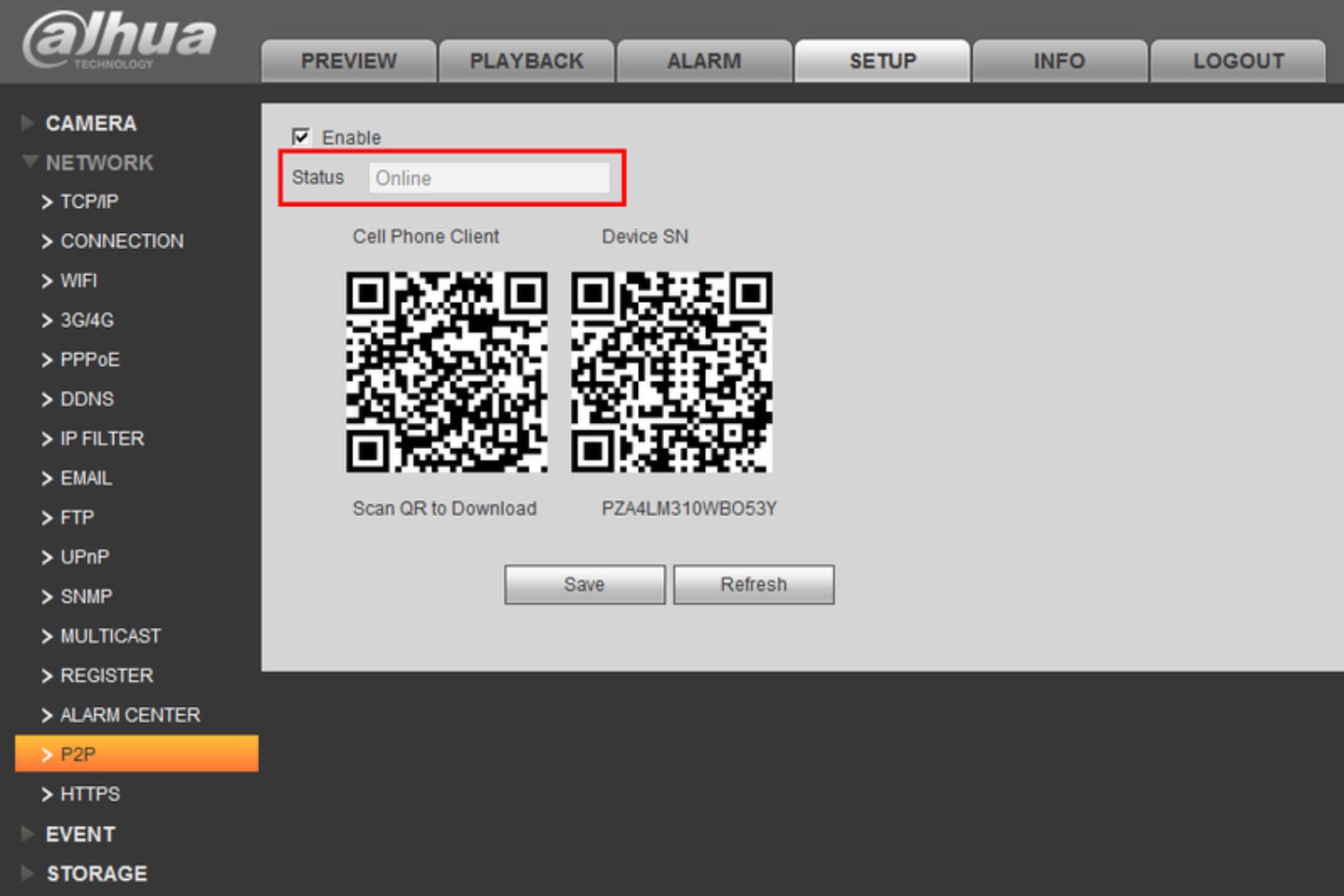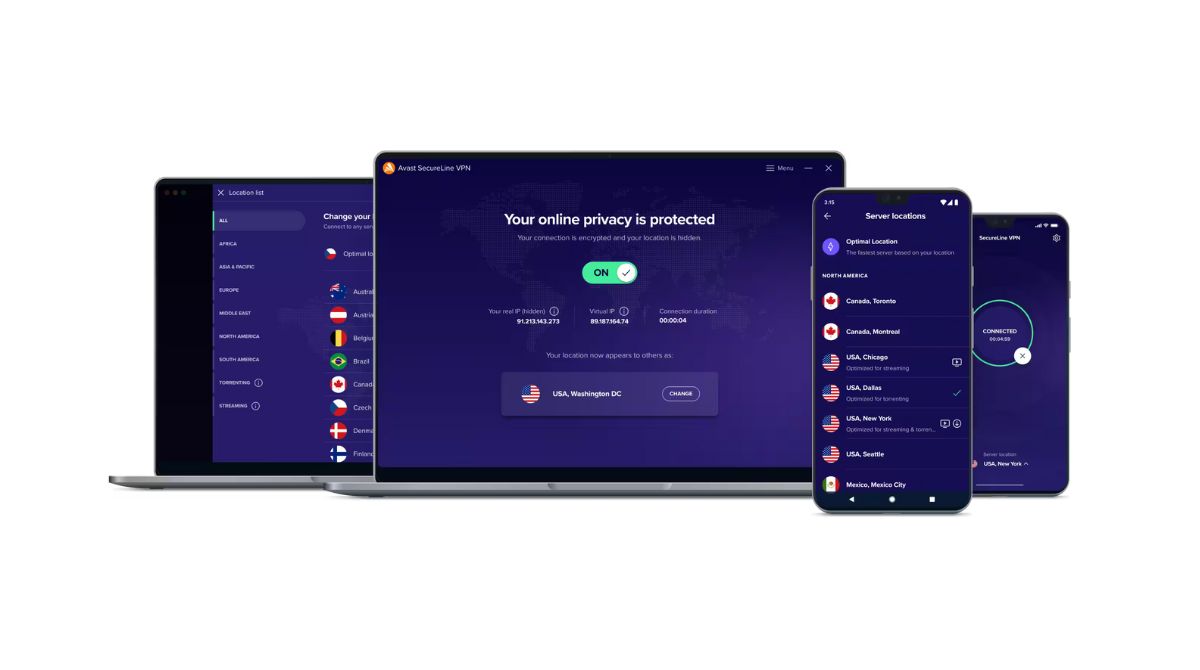Introduction
In today’s digital age, Peer-to-Peer (P2P) traffic has become increasingly prevalent. P2P networks allow individuals to share files directly with each other, bypassing traditional centralized servers. While P2P technology has many legitimate uses, such as sharing open-source software or distributing large files, it can also be used for illegal activities like copyright infringement and unauthorized sharing of copyrighted material.
Due to the potential risks and challenges associated with P2P traffic, many organizations and network administrators may opt to block or restrict P2P traffic within their networks. By implementing adequate measures, they can ensure their network operates efficiently, protect their bandwidth resources, and enhance security.
This article will explore the various reasons why blocking P2P traffic may be necessary, as well as the methods to effectively achieve this. By understanding the benefits and different approaches to blocking P2P traffic, network administrators can make informed decisions to safeguard their network and ensure optimal performance.
What is P2P Traffic?
Peer-to-Peer (P2P) traffic refers to the transfer of data between two or more devices directly, without the need for a centralized server. This decentralized approach allows users to share files and resources with each other, creating a network where the participants both contribute and consume data. P2P technology utilizes the collective bandwidth and storage capacity of participating devices, resulting in efficient and scalable data sharing.
P2P networks are commonly used for file-sharing purposes, allowing individuals to distribute and download large files such as movies, music, and software. Rather than relying on a single server to host the files, P2P networks divide the data into smaller pieces and distribute them across multiple devices. This distributed nature of P2P traffic not only improves download speed and reliability but also reduces the server load and bandwidth consumption.
One of the key features of P2P networks is their ability to operate in a decentralized manner. Unlike traditional client-server models, where the server manages and controls all data transfers, P2P technology enables peers to communicate directly with each other. This direct communication enhances privacy and reduces the reliance on central authorities.
Although P2P technology offers numerous benefits, it also poses a set of challenges. One of the concerns is that P2P networks can be susceptible to misuse and illegal activities. Copyright infringement, unauthorized sharing of copyrighted material, and the distribution of malicious content are some of the risks associated with unregulated P2P traffic. Furthermore, P2P networks can consume significant amounts of network bandwidth and impact the performance of other essential services within an organization.
Why Block P2P Traffic?
While P2P technology has legitimate uses, there are several reasons why organizations and network administrators may choose to block or restrict P2P traffic within their networks:
- Security Concerns: P2P networks can be a breeding ground for cyber threats. Malicious users may exploit P2P technology to distribute malware, viruses, or other malicious content. Blocking P2P traffic helps minimize the risk of malware infections and data breaches.
- Bandwidth Management: P2P traffic tends to consume significant amounts of network bandwidth. When left uncontrolled, it can overwhelm the network, causing slowdowns and disruptions for other critical applications and services. By blocking or regulating P2P traffic, network administrators can ensure fair distribution of bandwidth resources.
- Legal Compliance: Some organizations may have legal obligations to prevent the unauthorized sharing or distribution of copyrighted materials. By blocking P2P traffic, they can mitigate the risk of copyright infringement and protect themselves from legal liabilities.
- Productivity and Resource Management: P2P file sharing can lead to increased non-work-related internet usage, which may hamper employee productivity. By blocking or limiting P2P traffic, organizations can promote a more focused work environment and allocate network resources efficiently.
- Network Performance Optimization: In some cases, P2P traffic can cause network congestion, leading to latency issues and decreased performance for essential services. Blocking P2P traffic can ensure a smoother and more reliable network experience for users.
It’s important to note that the decision to block or restrict P2P traffic should be based on an organization’s specific needs, policies, and legal obligations. By carefully evaluating the risks and benefits, network administrators can implement appropriate measures to maintain network security, optimize performance, and ensure compliance.
Methods to Block P2P Traffic
There are several methods available to block or restrict P2P traffic within a network. The choice of method depends on the network infrastructure, desired level of control, and specific requirements of the organization. Here are five commonly used methods:
- Application-Level Blocking: This method involves identifying and blocking specific P2P applications or protocols at the application layer of the network. Firewall rules or network monitoring tools can be used to detect and restrict P2P traffic based on the specific signatures or behavior patterns associated with P2P applications.
- Network-Level Blocking: Network-level blocking involves using network devices, such as routers or switches, to block or restrict P2P traffic based on IP addresses, ports, or traffic flow patterns. This method provides a more granular level of control and can be effective in preventing P2P traffic from entering or leaving the network.
- Deep Packet Inspection (DPI): DPI technology examines the content of data packets flowing through the network and can identify P2P traffic based on patterns or signatures specific to P2P protocols. By leveraging DPI, network administrators can detect and block P2P traffic in real-time, ensuring strict control over the network.
- Utilizing Firewalls: Firewalls play a crucial role in network security and can be configured to block P2P traffic by creating rules that deny or limit P2P connections. Firewalls can be set up to monitor incoming and outgoing P2P traffic, allowing network administrators to enforce strict policies to prevent unauthorized P2P file sharing.
- Bandwidth Shaping: This method involves implementing Quality of Service (QoS) policies to prioritize or limit the bandwidth allocated to P2P traffic. By assigning lower bandwidth priorities to P2P applications or setting bandwidth caps, network administrators can effectively regulate P2P traffic and prevent it from monopolizing network resources.
It’s important to note that no single method is foolproof, and a combination of these techniques may prove more effective in blocking or restricting P2P traffic. Additionally, it’s crucial to regularly monitor and update these measures to keep up with changing P2P technologies and evolving network security threats.
Application-Level Blocking
Application-level blocking is a method used to block or restrict P2P traffic by targeting specific P2P applications or protocols at the application layer of the network.
Network administrators can employ firewall rules or network monitoring tools to identify and block P2P traffic based on the specific signatures or behavior patterns associated with P2P applications. This method allows granular control over which P2P applications are permitted or blocked within the network.
There are several techniques that can be used for application-level blocking:
- Signature-Based Detection: This method involves creating rules that detect and block traffic based on known signatures of P2P protocols. These signatures can be obtained from databases or through manual analysis of P2P applications.
- Behavioral Analysis: Network monitoring tools can track the traffic behavior of applications and identify P2P traffic based on specific patterns. For example, P2P traffic often exhibits high bandwidth usage, multiple simultaneous connections, and irregular communication patterns.
- URL Filtering: Network administrators can maintain a list of URLs associated with P2P traffic and block access to these websites. This method can prevent users from downloading P2P applications or accessing P2P file-sharing websites.
- Application-Level Gateways: Gateways or proxies can be set up at the network perimeter to inspect and control P2P traffic. These gateways act as intermediaries between the users and the P2P applications, allowing network administrators to block or regulate P2P traffic.
Application-level blocking provides flexibility in terms of which P2P applications or protocols to target and apply controls to. However, it requires continuous monitoring and updating of the rules to keep up with new P2P applications and evolving traffic patterns.
It’s worth noting that some users may attempt to bypass application-level blocking by using encryption techniques or alternate ports for P2P traffic. Therefore, network administrators need to stay vigilant and employ additional methods in conjunction with application-level blocking for comprehensive control over P2P traffic.
Network-Level Blocking
Network-level blocking is a method used to block or restrict P2P traffic by leveraging network devices such as routers or switches to control the flow of P2P traffic at a lower level of the network stack.
Unlike application-level blocking which targets specific P2P applications or protocols, network-level blocking focuses on blocking or restricting traffic based on IP addresses, ports, or traffic flow patterns associated with P2P traffic.
Here are some common techniques used for network-level blocking:
- IP Address Blocking: Network administrators can identify and block known IP addresses associated with P2P networks or P2P traffic. This method prevents devices within the network from establishing connections with these IP addresses.
- Port Blocking: P2P applications often use specific ports for communication. By blocking these ports at the network level, network administrators can effectively prevent P2P traffic from entering or leaving the network.
- Traffic Shaping: Traffic shaping involves controlling the flow of network traffic based on specific parameters. Network administrators can shape the traffic based on characteristics commonly associated with P2P traffic, such as high bandwidth usage or the use of certain protocols.
- Access Control Lists (ACLs): ACLs allow network administrators to define rules that permit or deny traffic based on various criteria, including source or destination IP addresses, protocols, or ports. By configuring ACLs to block P2P traffic, network administrators can effectively restrict P2P activity within the network.
- Blacklisting: Network administrators can maintain a blacklist of known P2P applications, protocols, or IP addresses and configure network devices to block traffic associated with the entries on the blacklist.
Network-level blocking provides a scalable and centralized method to control P2P traffic within a network. However, it may not be as specific or as granular as application-level blocking when it comes to targeting individual P2P applications or protocols. Additionally, network-level blocking may require continuous monitoring and updating of rules to account for new P2P traffic patterns or emerging P2P technologies.
It’s essential to strike a balance between blocking P2P traffic and allowing legitimate network communication to ensure the network remains functional and efficient while maintaining security and policy compliance.
Deep Packet Inspection (DPI)
Deep Packet Inspection (DPI) is a method used to block or regulate P2P traffic by examining the content of data packets flowing through a network. DPI goes beyond merely inspecting packet headers and delves into the actual payload of each packet, allowing network administrators to identify specific applications or protocols, including P2P traffic.
By deploying DPI technology, network administrators can detect and block P2P traffic in real-time, enabling them to enforce strict controls and policies over the network. Here’s how DPI works:
1. Packet Capturing: DPI tools capture and analyze individual data packets as they traverse the network. The packets are inspected for their content, including headers, payload, and other relevant data.
2. P2P Protocol Identification: DPI tools employ various techniques, such as signature-based detection or heuristic analysis, to identify P2P protocols. Patterns, behaviors, or unique characteristics associated with P2P traffic can be used as indicators for detection.
3. Traffic Classification: Once P2P traffic is identified, DPI tools classify it as such and apply the predefined policies or actions set by network administrators. These policies can involve blocking, throttling, or prioritizing P2P traffic based on network requirements and security policies.
4. Real-Time Monitoring: DPI tools continuously monitor network traffic to ensure P2P traffic is effectively detected and managed. Any changes in P2P traffic patterns or the emergence of new P2P protocols can be detected and responded to promptly.
DPI provides a high level of control over network traffic, allowing network administrators to selectively block or regulate P2P traffic based on fine-grained inspection of packet contents. By utilizing DPI, organizations can effectively mitigate security risks, optimize network performance, and adhere to compliance regulations.
However, it’s important to consider the potential impact on the network infrastructure when implementing DPI. The deep inspection of packet contents can introduce additional latency and processing overhead, requiring robust hardware and infrastructure capabilities to handle the increased computational load of DPI operations.
Furthermore, it’s crucial to balance the benefits of DPI with user privacy concerns. The deep inspection of packet contents raises ethical considerations, and it’s important to ensure that DPI is implemented in accordance with applicable laws and privacy guidelines.
Utilizing Firewalls
Firewalls play a crucial role in network security and can be an effective tool for blocking or limiting P2P traffic within a network. Firewalls act as a barrier between the internal network and external networks, allowing network administrators to control the flow of traffic and enforce security policies.
There are several ways to utilize firewalls to block or control P2P traffic:
- Packet Filtering: Firewalls can be configured to examine individual packets based on certain criteria like source or destination IP address, port numbers, or protocol type. By creating packet filtering rules, network administrators can block or allow specific packets associated with P2P traffic.
- Stateful Inspection: This method involves tracking the state of network connections to identify and allow or block P2P traffic. Stateful inspection firewalls maintain a record of active connections, ensuring that inbound traffic only corresponds to outbound traffic initiated from within the network.
- Application-Level Gateways: Firewalls can be used as application-level gateways to examine and control P2P traffic at a deeper level. By acting as intermediaries between users and P2P applications, they can enforce policies that restrict or monitor P2P connections.
- Proxy Servers: Proxy servers act as intermediaries between users and the internet. By configuring a proxy server to handle P2P traffic, network administrators can control and block specific P2P applications or protocols, effectively restricting P2P traffic within the network.
- Unified Threat Management (UTM) Firewalls: UTM firewalls combine various security functions, including firewalling, intrusion detection and prevention, content filtering, and more. These advanced firewalls can provide comprehensive protection against P2P traffic and other network security threats.
Firewalls offer the advantage of being able to enforce network-wide policies, providing a centralized and scalable approach to blocking or controlling P2P traffic. Additionally, firewalls can be configured with custom rules to allow specific P2P applications that are deemed necessary for business operations, while blocking others.
It’s important to regularly update and maintain firewall rules to adapt to evolving P2P technology and emerging security threats. Network administrators should also ensure that firewalls are properly configured, taking into account the specific requirements and network architecture of their organization.
While firewalls are powerful tools for managing P2P traffic, they should be used in conjunction with other methods such as application-level blocking or DPI to provide a comprehensive and multi-layered approach to P2P traffic control and network security.
Bandwidth Shaping
Bandwidth shaping, also known as traffic shaping, is a method used to control and limit the amount of bandwidth allocated to specific types of traffic, including P2P traffic. By shaping the traffic based on certain parameters, network administrators can enforce bandwidth restrictions and prioritize critical network services over less important or nonessential ones.
Here’s how bandwidth shaping can be used to manage P2P traffic:
- Prioritization: Network administrators can assign lower priority to P2P traffic compared to other critical network services. By giving higher priority to essential applications and services, such as VoIP or video conferencing, bandwidth is allocated more efficiently, ensuring optimal performance for vital operations.
- Bandwidth Caps: Network administrators can set specific bandwidth caps or limits for P2P traffic. This approach restricts the total amount of bandwidth that P2P traffic can consume, preventing it from monopolizing network resources and affecting the performance of other services.
- Traffic Queuing: By implementing traffic queuing mechanisms, network administrators can enforce a fair sharing of bandwidth among different types of traffic. P2P traffic can be assigned a lower queue priority, ensuring that it doesn’t interfere with other mission-critical applications or exceed the designated portion of available bandwidth.
- Rate Limiting: Rate limiting involves setting a maximum rate at which P2P traffic can transmit or receive data. This method effectively throttles the speed of P2P traffic, preventing it from overwhelming the network and causing latency issues for other important services or applications.
Bandwidth shaping can prevent P2P traffic from monopolizing network resources while maintaining a balanced network performance. By shaping the traffic, network administrators can ensure fair distribution of bandwidth, prioritize critical services, and enhance overall network efficiency.
It’s crucial to strike a balance when shaping P2P traffic. Overly stringent policies may hinder legitimate use of P2P applications related to business needs, while lenient policies could result in excessive bandwidth consumption or degraded network performance.
Regular monitoring and analysis of network traffic patterns are necessary to identify opportunities for optimization and ensure that bandwidth shaping policies remain effective. In addition, it’s essential to communicate and educate users about the reasons behind bandwidth shaping measures to manage their expectations and promote understanding within the organization.
Implementing bandwidth shaping in conjunction with other methods, such as application-level blocking or network-level filtering, can provide a comprehensive approach to controlling P2P traffic and maintaining a well-managed and efficient network environment.
Conclusion
Blocking or restricting Peer-to-Peer (P2P) traffic within a network is a crucial consideration for organizations in order to maintain network security, optimize performance, and adhere to legal and compliance obligations. P2P technology, while offering legitimate uses, also presents significant risks, including security threats, bandwidth consumption, and legal implications.
In this article, we explored various methods to block P2P traffic, including application-level blocking, network-level blocking, deep packet inspection (DPI), utilizing firewalls, and bandwidth shaping. Each method offers its own benefits and considerations, and a combination of these methods is often the most effective approach to controlling P2P traffic within a network.
Application-level blocking allows granular control by targeting specific P2P applications or protocols, whereas network-level blocking operates at a lower network level, restricting traffic based on IP addresses, ports, or traffic flow patterns. DPI provides deep inspection of packet contents, while firewalls act as a barrier to control traffic flow. Bandwidth shaping helps allocate network resources effectively and prioritize critical services.
Network administrators must assess their organization’s specific needs, network infrastructure, and legal obligations to determine the most suitable methods for blocking or restricting P2P traffic. Regular monitoring, updating of rules, and staying updated on emerging P2P technologies and security threats are crucial to maintaining an effective P2P traffic control strategy.
By implementing measures to block or restrict P2P traffic, organizations can enhance network security, optimize bandwidth usage, ensure legal compliance, enhance productivity, and prioritize critical services. Finding the right balance between enabling legitimate network communication and safely controlling P2P traffic is essential for maintaining a secure and efficient network environment.
With careful consideration and the implementation of appropriate methods, network administrators can effectively control P2P traffic within their networks, promote a secure and productive network environment, and ensure optimal performance for essential business operations.

























